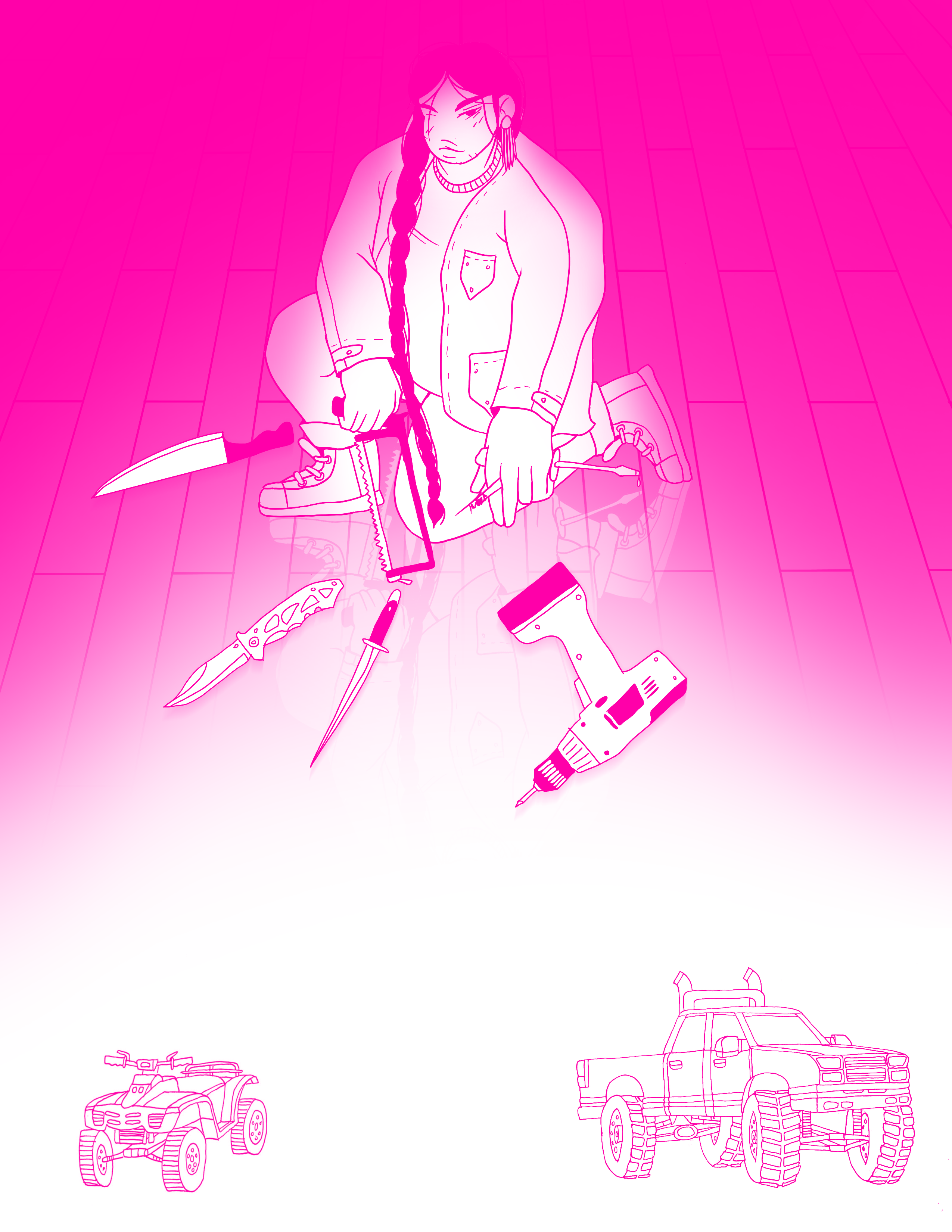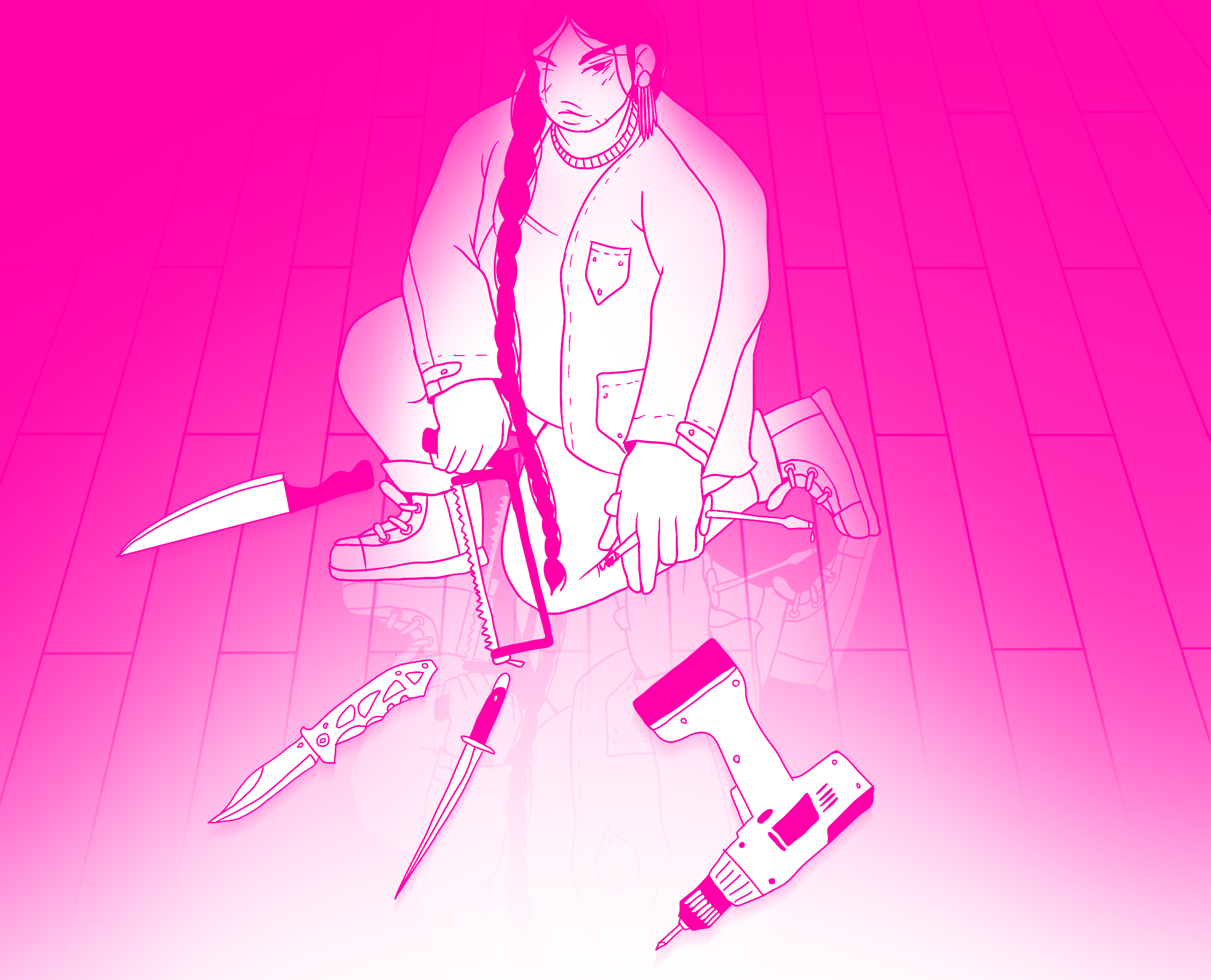Mean Old Ladies
Monstrous mothers are not a new development in horror. In 1960, Alfred Hitchcock would set into motion the first hagsploitation cycle with his popular adaptation of Robert Bloch’s novel of the same name: Psycho. In the now-classic film, the hapless Norman Bates becomes so obsessed with his controlling mother that he eventually “becomes” her after her death, taking his repressed sexual rage out on the visitors of his defunct hotel. As a psychiatrist in the film explains in Psycho’s famous closing monologue, Norman’s mother was a “clinging, demanding woman” who isolated her son from the world only to later abandon him for a new lover. In revenge, Norman would kill his mother but could not escape her: slowly he would begin to mimic her speech and then target the young women who violated her stringent standards of womanhood—the very kinds of women the living “Mother” sought to shield her son from. The film presents a troubling inversion of the Oedipal structure—Norman is “emasculated” through his hyper attachment to his mother, and conversely, the film consistently punishes women who stray from normative modes of romantic attachment (Marion Crane is murdered for theft and adultery, just as “Mother” is killed because she seeks a new relationship after the death of Norman’s father). In Psycho, maintaining the gender binary is deadly business—men and women must carefully contain their desires for one another. A mother can love her son, but not too much, and vice-versa. And those who refuse to conform to this binary are figured as the worst monsters of all.
Again and again in horror, older women’s bodies are represented as inherently disgusting.
Following the release of Psycho, monstrous mothers would crop up all over horror cinema. What Ever Happened to Baby Jane? (1962) is a self-reflexive use of the trope, as the film questions society’s (and especially Hollywood’s) obsession with women’s youth. Bette Davis, one of the film’s stars, would go on to play a similar role in a soft sequel titled Hush… Hush, Sweet Charlotte (1964). Similarly, in The Leech Woman (1960), a jilted wife takes revenge on her husband, draining him of his life force so that she can achieve eternal youth. In this approach to the subgenre, women are seemingly driven into madness through their attachment to a “lost” youth. As such, these films reveal some assumptions driving normative notions of “womanhood” —women must be sexually desirable, fecund, and passive. The loss of this form of womanhood is, these narratives assume, what drives the “hag” to lash out violently. What Ever Happened to Baby Jane? would become a core text in the “hagsploitation” genre, which Erin Harrington, author of Women, Monstrosity and Horror Film: Gynaehorror, says usually “feature older female actors playing mentally unstable or psychotic villains, vulnerable ‘women in peril’, and – in some cases – a slippery combination of the two… in a manner that plays with the spectator’s allegiances and sympathies let alone their expectations of normative, well contained femininity.”
Again and again in horror, older women’s bodies are represented as inherently disgusting. The aging woman’s body is abjected for a variety of reasons: a loss of reproductive capability (a “normal” woman achieves value through her capacity to reproduce), a sign of inescapable mortality and approaching decay (science cannot keep a beautiful woman young forever), and the aging woman’s refusal to desire in socially acceptable ways is seen as deeply transgressive. Women must abandon their sexuality (and their social agency) once they can no longer reproduce because, it is assumed, they should have already established themselves within a heteronormative relationship that provides them with all they need. In short—society has decided that “good” older woman (especially someone’s grandmother) shouldn’t want to fuck. These interlocking stereotypes about womanhood converge in films like The Shining (1980). Jack Torrance, a man sexually disconnected from his aging wife/the mother of his child, is horrified when the beautiful woman in the bathtub that he tries to seduce is transformed into a “living corpse.” As Billie Walker writes, “The [hag’s] sagging breast is supposed to repulse its audience, as if it is no longer worthy of intimate touch once it ceases to produce milk.”
Such is the status of the aging woman in the Euro-American psyche: she embodies a kind of living death. This is made all the clearer by the relative absence of aging women from the media landscape. After the initial burst of hagsploitation films in the 1960s and 1970s, the figure would make an occasional appearance via the trope of the “evil witch” or “wicked stepmother.” And much of mainstream media centres the experiences of those in the “prime” of life, with “good” older women taking on the peripheral role of the quiet caretaker. Rarely do older women appear in the centre of a narrative, and even more rarely are they depicted as desiring and desirable.
Motherhood and Trauma
Two recent films offer unique spins on the archetype of the monstrous mother in ways that expose how race also shapes notions of femininity and motherhood. In Ma (2019), Octavia Spencer plays Sue Ann, a Black woman who experiences sexual humiliation in her youth at the hands of her white peers and, after a chance run-in with the son of the man who exploited her, decides to take revenge on the children of her bullies. Sue Ann, or Ma, as the children call her, is able to gain the teenagers’ trust by playing into stereotypes of Black womanhood—as “Ma,” Sue Ann does various domestic favours for the children and positions herself as an accepting “surrogate” mother for a group of mostly white children who feel abandoned by their busy and self-obsessed parents. Eventually, we learn that Sue Ann has a child of her own, a daughter named Genie (played by Tanyell Waivers), whom she has kept isolated from the rest of the small town. Sue Ann has also convinced Genie that she is chronically ill, forcing her to use a mobility device in public. Sue Ann’s treatment of Genie is part trauma response, part power play—Sue Ann wants to protect Genie from the kinds of sexual violence that she experienced as a youth, and Genie is one of the few characters in the world of the film that she can exert any kind of power over. In the film’s climax, Sue Ann tries to drag Genie into her home’s burning basement so that both of them will perish in the flames. It’s a tableau that recalls Toni Morrison’s classic haunted-house novel Beloved. Sethe, the novel’s protagonist, kills her infant daughter so that she cannot become enslaved. Similarly, in Ma, Sue Ann tries to first hide and then later kill her daughter rather than relinquish her to a world that Sue Ann knows hates and hurts Black girls.

Recent films offer unique spins on the archetype of the monstrous mother in ways that expose how race also shapes notions of femininity and motherhood.
Director Iris K. Shim also uses the figure of the big mean mother to explore themes of intergenerational trauma in her 2022 film Umma, which stars Sandra Oh as Amanda, a woman who becomes possessed by the spirit of her recently deceased mother. Amanda is herself a mother, who, like Sue Ann, chooses to isolate her child from the world because of the trauma she has endured. Amanda and her daughter Chris (Fivel Stewart) live on an isolated farm without electricity. While Amanda and Chris seem to have a healthy relationship, it becomes clear that Amanda is hiding much of her past from her daughter. This dark past can no longer be repressed when Amanda’s uncle arrives from Korea and delivers to Amanda the remains of her mother. As the narrative unfolds, we discover that after Amanda and her parents immigrated from Korea, Amanda’s mother would take out her rage on Amanda, subjecting her daughter to psychological and physical torture that left Amanda deeply scarred. The film is thus an exploration of intergenerational trauma that comes out of living in a white supremacist world: Umma (“mommy” or “mom” in Korean), a Korean immigrant, experienced racism,and isolation during her time in America. After death, the angry spirit of Umma slowly begins to take over the house and then Amanda herself, driving the mother and daughter further apart. Eventually, Amanda and Chris are able to reconcile and put Umma’s angry spirit to rest, re-establishing intergenerational maternal bonds in the process through a shared reconnection with their Korean cultural heritage.
Don’t Upset Her…
Another compelling film that features a monstrous matriarch is Barbarian (2022). Written and directed by comedy-sketch-actor-turned-horror-visionary Zach Cregger, Barbarian also features a strong female lead in the part of Tess (played by Georgina Campbell). In the film, Tess is dragged into an underground lair by “The Mother,” a woman who we discover is the result of generations of secret incestual interbreeding. In an interview, Cregger explains that he was inspired by a chapter from the book The Gift of Fear, which encouraged women to watch out for clues of men’s behaviour. Cregger says that reading the chapter made him realize that women must constantly be attentive to men in order to assess whether they are a physical threat, and this in turn inspired him to conduct a writing exercise where he wrote as many “red flags” as he could into a scene between a newly acquainted man and woman.
In spite of this stated desire to attend to the dynamics of gendered violence, and the presence of strong, tough women who make up the core of the film’s cast, Barbarian is more so a meditation on contemporary masculinity. The film’s three male characters—Keith, AJ, and Frank—each embody a different aspect of troubling masculinity. Tess meets Keith (Bill Skarsgård) when she finds him sleeping in the Airbnb that she has booked for the night. Upon my initial viewing of the film, I assumed that Keith would be the titular “Barbarian” as Kregger is successful in writing this character as hapless-yet-creepy. Yet, in a Psycho-inspired narrative structure, Tess and Keith are dragged into the basement by The Mother about thirty minutes into the film, Keith is killed, and the narrative shifts focus to the character of AJ (Justin Long).
AJ is an actor who has been publicly accused of sexual assault by a co-star and is also the landlord of the Airbnb that The Mother lives under. Throughout the film AJ speaks of wanting redemption but continuously acts in opposition to those stated desires. After he and Tess escape from The Mother, AJ opines “I hurt somebody! That matters. I don’t know if I’m a bad person. But I might be. I might be a bad person. Or maybe I’m a good person who just did a bad thing. I can’t change what I’ve done. I can just try and fix it. And that’s what I’m going to do. I’m going to fix it.” Yet he also brags about the sexual assault he committed to a friend and physically harms Tess several times over the course of their escapes from The Mother.
Barbarian uses hagsploitation in order to interrogate how masculinity constructs women as objects of consumption and control and tries to shine a light on the paranoid world that patriarchy creates.
And while AJ is figured as inept, heartless, and horrific because of his history of sexual violence, even he is disgusted when he encounters the character Frank. Frank, who is the father/lover to The Mother, is also a serial rapist who records these acts of violence and re-watches them habitually in the cavernous hell he has created through this violence.
In my later screening of Barbarian, knowing the main twist, more Psycho resonances occurred. The back-and-forth between Tess and Keith mirrors Psycho’s early dialogue scenes between Norman Bates and Marion Crane. However, with Barbarian, the dramatic schema is inverted. Once you know the twist of Psycho, in subsequent screenings the interactions with Norman take on an even more chilling tone. Conversely, while Keith is an awkward and unsettling character, in later screenings the tension around his character is diffused knowing that he isn’t the one who ends up attacking Tess (although the film leaves his backstory vague such that we can never know if Keith was truly a threat or not).
Kregger’s trick with Keith works because we live in a patriarchal world that enables sexual violence against women, trans, and nonbinary people because sex is seen as an object that men are entitled to possess. We read Keith’s awkward comments in a paranoid fashion because he inhabits the same world that creates and emboldens characters like AJ and Frank.
As a woman, Barbarian didn’t tell me anything about the world I didn’t already know, and it didn’t offer any female characters I had not already encountered in horror before—Tess, the curious final girl, and The (Monstrous) Mother are figures I know well. Instead, it feels like Kregger is instead addressing men in the audience, asking them to examine their own privilege and reflect on how they interact with others. Barbarian uses hagsploitation in order to interrogate how masculinity constructs women as objects of consumption and control and tries to shine a light on the paranoid world that patriarchy creates. Yet it does so while participating in a familiar form of misogynistic abjection. And while I find Barbarian to be an interesting, entertaining, well-executed, and self-aware entry into the hagsploitation genre, I must also wonder why the film’s critique of “toxic masculinity” becomes possible via the figure of the terrible mother. While male viewers are openly invited to examine the various roles they play in enforcing patriarchy, the aging mother must remain a monster; a figure hidden away to only emerge in our worst nightmares.












